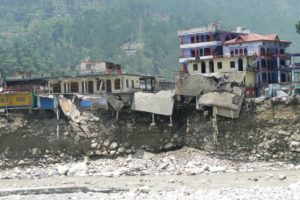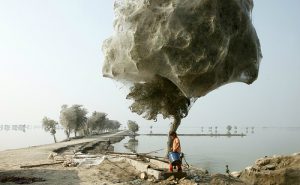Farmers manage most of the world’s water, and China is no exception: agriculture accounts for 68% of the water taken from groundwater sources, lakes or rivers. With a country in water crisis, much needs to be done to improve farming practices and prevent waste.
Despite being one of the most water-rich nations in the world, China’s fresh water supplies are severely stressed. This is partly due to the unequal distribution of water across the country and the fact that much of China’s crops are grown on the arid North China Plain.
But the Chinese agricultural industry also wastes large volumes of water through poor management and inefficient irrigation. China’s attempts at food self-sufficiency and demands from its rising and increasingly wealthy population have led to heavy application of fertilisers and pesticides as farmers try to improve crop yields.
Inorganic agricultural chemicals seep into rivers and lakes causing pollution and impacting ecosystems. Inefficient irrigation techniques and the over extraction of groundwater have caused extensive depletion and water shortages. China’s First National Census of Water recently reported that up to 28,000 rivers have disappeared across the country over the last 20 years.
Although the government puts most of the blame for the vanishing rivers on global climate change and statistical errors, Peter Gleick, president of the Pacific Institute and a leading water expert, points to a different culprit. “The ‘disappearance’ of major rivers and streams is far more likely to be directly connected to uncontrolled and unsustainable extraction of water for industry and agriculture,” The Atlantic quotes him as saying.
One of the government’s solutions to this crisis is the South-North Water Transfer Project, which will divert water north from the Yangtze. This enormous and costly project doesn’t even begin to address the issue of overuse and environmental pollution. What’s needed is a complete rethink in how China manages its water.
A key element of this must be change within the agricultural industry, starting with investment in improved irrigation technologies to reduce water use and incentives to improve fertiliser and pesticide application. Encouraging government departments to develop policies that address the links between water, food, energy and the environment in tandem with strong enforcement of environmental laws and regulations will also help encourage industry and farmers to see the value in conserving and protecting water and the environment.
Consumers can also play a role. The fact that we eat most of the water we use means that our food choices have a large impact on our natural environment. The water contained in our food is called virtual water or embedded water. It is especially high in meat products – chickens, pigs and cows all consume large amounts of feed during rearing.
Producing a kilogram of chicken requires 3,900 litres of water, for example, while a kilogram of pork and beef require 4,900 and 15,000 litres respectively. According to the US Agricultural Department, meat consumption, especially pork, has quadrupled in China in the last 30 years and is continuing to rise rapidly.
By reducing our meat intake, we can significantly reduce the amount of water we consume. However, reducing our meat consumption is only part of the solution. The other lies in reducing our waste. The world currently wastes between 30% and 50% of all food grown, representing billions of litres of fresh water, as well as the energy and chemicals required to grow it, according to the UK Institution of Mechanical Engineers. By living within our means we can help to ensure China’s fresh water and the life it supports will be available for future generations.




